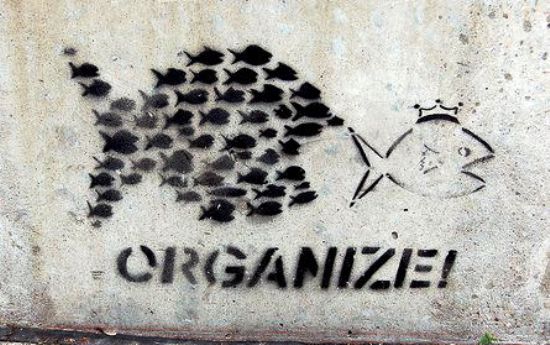I remember once sitting with our director of communications, way before I was one myself. At the time, I was on the program side of the house, and in the conversation, she was asking me to explain what community mobilization meant. Apparently community mobilization did not invoke anything for her. It was just gibberish jargon, and she kept asking, again and again, “But what IS it? What do you DO?” as if it could lend itself to a simple explanation or a widget or sound bite for a general audience.
I remember being so frustrated, because for our program staff and partners, it was a “duh.”
Community mobilization meant that if you wanted to do anything at the grassroots level, you would start by going to the community first. You would sit with the elders or address the town council. You would gather the women. You would hold a meeting. People would come. You would visit people’s homes. You would return. You would have more meetings. You would visit more homes. You would talk to more people, more groups. Community mobilization meant you were part of an ongoing conversation in an ongoing set of relationships about the kind of future you wanted.
Indeed, there was a wealth of meaning in just those two words.
Knowing what I know now, having been a party to a long-overdue awakening of white folks in the wake of reactionary U.S. politics over the past year, I have more compassion for that director of communication’s lack of understanding when it comes to community mobilization.
Because what we were talking about to her was organizing. Perhaps she’d never been a part of it, or perhaps I should have just said that!
 Community organizing is a process that has been depoliticized in the global philanthropy and aid sectors. We know this sector has class, race, and gender diversity problems. And the more privileged a person is, I would argue the higher the potential that they’ve never been an organizer or a participant in effective grassroots organizing efforts focused on the interests of people who are marginalized. Perhaps we refer to it as “mobilization” because it raises less questions with our more powerful, and sometimes conservative funders. Or perhaps many can only understand it from a intellectualized perspective.
Community organizing is a process that has been depoliticized in the global philanthropy and aid sectors. We know this sector has class, race, and gender diversity problems. And the more privileged a person is, I would argue the higher the potential that they’ve never been an organizer or a participant in effective grassroots organizing efforts focused on the interests of people who are marginalized. Perhaps we refer to it as “mobilization” because it raises less questions with our more powerful, and sometimes conservative funders. Or perhaps many can only understand it from a intellectualized perspective.
Harvard Law School defines community organizing as:
“A process by which people are brought together to act in common self-interest and in the pursuit of a common agenda. Community organizers create social movements by building a base of concerned people, mobilizing these community members to act, and in developing leadership from and relationships among the people involved. Organized community groups seek accountability from elected officials, corporations and institutions as well as increased direct representation within decision-making bodies and social reform.”
Though we refer to working with communities constantly in our work, the –ization suffix signals that funders should not be too worried about the masses getting riled up. Community mobilization neutralizes the language and makes sure those in power don’t see the potential shaking of the foundations – literally and figuratively. And this applies to much more than just the lexicon we use.
But guess what?
All this is organizing, if it’s done right. Person-to-person, building individuals’ – but more importantly – our collective power. And that is the essence of movement building in general. It doesn’t lend itself to being over-analyzed or dissected or evaluated. The way to best learn community organizing and movement building is to do it – most importantly, in our own communities, sometimes even in our own families – first.
I’m not a part of this sector to “fight poverty” in a nebulous, idealistic sense. I’m not here to write reports or attend conferences. I’m here to gather and work with people who are dismantling the structures that perpetuate inequality, discrimination, and injustice.
If there’s anything I’ve learned in the last year in the U.S., it’s that we in this sector can no longer afford to be removed and apolitical – ourselves, our colleagues, our leaders, or our institutions. Had I known how to better articulate this, what I would have shared with our director of communications back then is this:
Community organizing is about giving those in power a good, hard, long shake.
***
Related Posts
“Create” nothing: A new social good mantra

I’ve been thinking lately about the relationship between community organizing and community building. I’d love to hear your views. Generally we organize allies to win something we believe in (because other people don’t believe in it and are fighting against it). Where in this falls the roll of BUILDING community, which implies (to me) a reweaving of community fabric so that we can live together, no matter what policies are in place. Do community organizing and community building work against one another? Are they sequenced? What do you think?
Pingback: 25 powerful ways funders can support social movements
Pingback: Getting specific about community organizing - Thousand Currents
I am Evangelist Henry Baliddawa Muyodi from Uganda and I am the Executive Director of Blessed Echoes Children Alliance a nonprofit organization supporting orphans and vulnerable children in Mayuge District and would like to get in touch with you in how to be partners.
I will be grateful to hear from you soon.
Henry